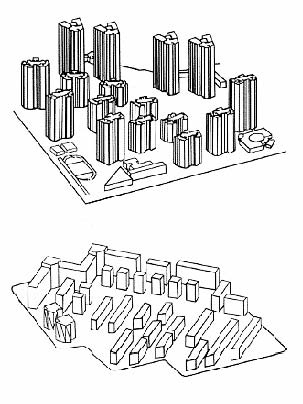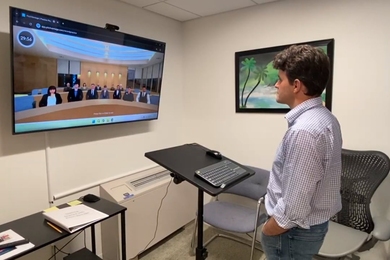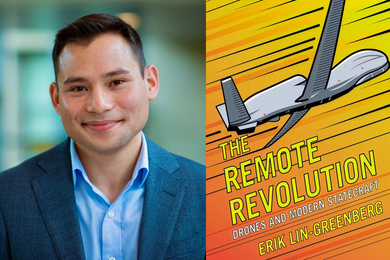This article was adapted for MIT Tech Talk from one originally published in the April-June 2002 issue of e-lab, a research bulletin of MIT's Laboratory for Energy and the Environment. The original article is online.
Inspired by a booming economy and new spending power, the people of China want the advantages that their Western counterparts have: more living space, more comfort and more amenities. Studies by MIT researchers working with colleagues from Chinese universities and development companies suggest that those dreams can be fulfilled without necessarily adopting the energy-intensive practices of the West.
China's rapid economic growth means that its energy consumption is also rising sharply. By 2020, energy consumed for residential and commercial bulidings could rise to fully a third of the energy use by the nation of 1.3 billion people. Sustainable, energy-efficient building design has thus become very important. Researchers in MIT's Building Technology Program and their Chinese collaborators have shown that applying some of China's traditional approaches and other simple techniques to modern building designs can yield substantial benefits.
For example, researchers demonstrated that a group of energy-efficient low-rise buildings could provide the same living conditions as energy-consuming high-rise structures. The low-rise buildings were designed and oriented to catch the sun's heat in winter and the prevailing breezes in summer. They also provide occupants a closer connection with outside communal green spaces.
An analysis of air conditioning needs in China showed that Beijing residents could be comfortable most of the time if they simply opened their windows at night and closed them during the day. When outdoor temperatures rise, cooled concrete floors would keep indoor temperatures down.
In working with the Chinese, the MIT researchers have made a troubling observation: developers are abandoning traditional Chinese practices and relying in energy-intensive Western methods instead. In the past, Chinese people typically lived in low buildings with communal green spaces. Designs made effective use of natural ventilation and solar heating. In contrast, the buildings being put up today are generally Western-style high rises that isolate residents from one another and from outdoor spaces, and that depend on energy-consuming methods of heating and cooling.
Although Chinese leaders recognize the need for energy efficiency, various nontechnical issues impede progress. Energy-efficient equipment is expensive; many construction workers are new to the trade and lack the skills to do high-quality work; China's building codes are not enforced through inspection of finished projects; and most consumers still get free heating and thus have little incentive to save energy.
The MIT and China researchers are also continuing to work with developers on energy-efficient designs and formulating simple computer-based tools that Chinese builders can use to compare the energy efficiency of design options.
For four years, the researchers have been preparing conceptual designs and performing parallel technology studies for large-scale residential demonstration projects in Beijing, Shanghai and Shenzhen (near Hong Kong). The cooperative effort involves MIT, Tsinghua University in Beijing, Tongji University in Shanghai and local Chinese development companies.
In two ongoing projects, the teams are designing a low-rise, high-density development for a 10-hectare site outside Beijing and a group of low-rise residential buildings for a two-hectare site in Shenzhen.
The team includes Leon R. Glicksman, a professor of building technology and mechanical engineering and director of the Building Technology Program; Leslie K. Norford, an associate professor of building technology in the Department of Architecture; Andrew M. Scott, an associate professor of architecture; John Fernandez, an assistant professor of building technology; and Lara Greden, a Ph.D. candidate in architecture. Another colleague, Professor Qingyan Chen, recently left MIT for Purdue University.
The research is supported by the Kann-Rasmussen Foundation and the Alliance for Global Sustainability.
A version of this article appeared in MIT Tech Talk on December 11, 2002.






